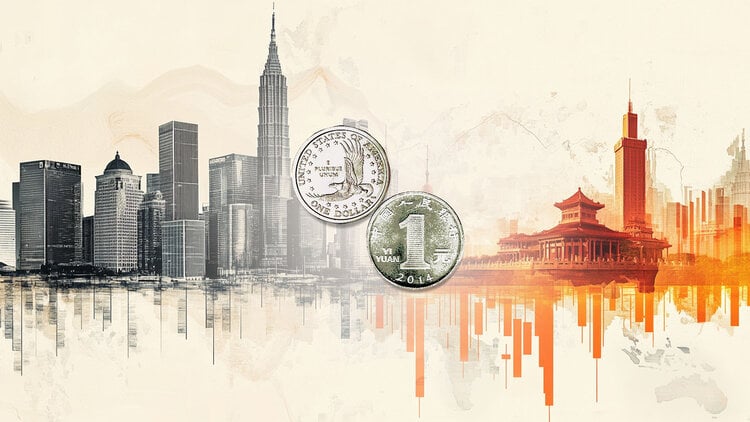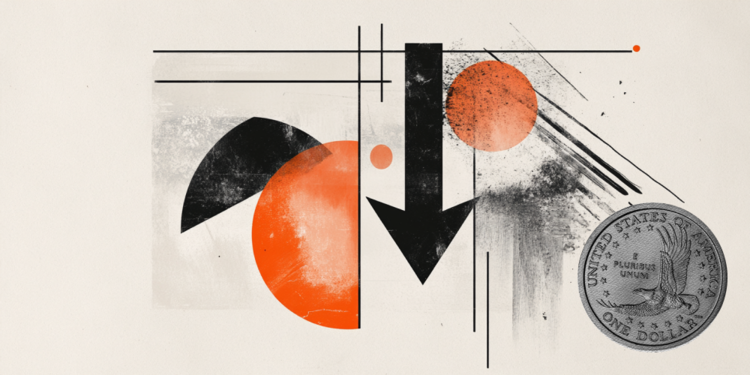The year 2021 brought BRL 1.08 billion in fundraising Copyright music, according to data from the Central Office for Collection and Distribution, Ecad.
The figure marks an expansion of 20% in relation to the previous year — and is associated with a growing curiosity about the music sector, understood, in the capital market, as a field with a lot of potential to be explored, according to experts consulted by the CNN Brasil Business .
In Brazil, the type of investment that capitalizes copyright on songs — the so-called musical royalties — has drawn attention for targeting what has become almost a buzzword in the financial market: the need to diversify the investment portfolio.
It works like this: by acquiring a slice of the rights attributed to certain works or artists, gathered in catalogues, the investor receives part of the revenue generated from each play, whether on TV or radio, whether on streaming platforms and social networks.
These are real assets linked to the performance of the music – that is, the more it plays, the greater the profitability.
“Royalties, in essence, mean the right to receive values every time a third person uses the asset, from oil extraction to music reproduction”, he explains to the CNN Arthur Farace, CEO and partner of Hurst Capital, one of the platforms to make the modality available in Brazil.
“If an investor is interested in music royalties, he can acquire part or all of a specific catalog and earn on the reproductions, or license it for a period.”
Each catalog is organized depending on the platform. It is possible, for example, to find those that bring together compositions by a single composer, songs sung by a specific artist or even a mixture of different musical genres.
“It is difficult for an individual to identify and negotiate directly with artists and price catalogues. This takes a lot of niche expertise. It is easier to opt for platforms that already do this work”, says the CEO of Hurst.
Two other platforms also lead the type of investment here: the São Paulo Adaggio, founded by former DJ João Lucas Caraccas, and Brodr, today directed by Pedro Nasser and Thiago Vargas from Minas Gerais.
Movement in Brazil
The heated industry took place in 2020, when the first crowdfunding platforms were created and the Brazilian Securities and Exchange Commission (CVM) regulated. On the international scene, especially in the United States, the sport is already better known.
It’s no coincidence that she took shape here in the first year of the pandemic. Although the copyright market moves billions a year, it is difficult for the artistic class to see the color of money: while a good part of the figure goes to record companies and publishers, artists’ income is formed mostly from concerts and presentations.
With the restrictions imposed by the pandemic and the consequent stoppage of the cultural sector, the source dried up. The result was a greater number of artists selling parts of their catalogues, both for subsistence and to make money available for new productions.
The growing presence of platforms is an indication of the greater demand for the modality in Brazil, although, today, the national monetary policy discourages, at first, the expansion of the investor’s range of risk assets.
With the Selic rate at 13.25% pa, in what was the 11th consecutive hike by the Monetary Policy Committee (Copom) in an attempt to contain the soaring inflation, risk aversion intensified. The result is a preference for more solid investments with a secure return, mainly linked to fixed income.
“When the interest rate is lower, the tendency is to search for alternative assets such as musical royalties, because the difference between returns is greater and risk aversion is smaller”, explains Pedro Nasser, from Brodr.
With the Selic at 13.25% and the Broad Consumer Price Index (IPCA), the country’s official inflation indicator, at 11.89% in the last 12 months, it is safer, from the point of view of the financial market. , bet on assets linked to Treasury Direct.
“Comparing the two rates with the average return on royalties, which is 15% to 18%, the investor usually chooses the familiar path, which he already knows how it works, rather than alternative assets,” says Nasser.
But despite the low tide, Hurst Capital’s Farace says he believes the rigs are “on the right side of the wave.”
“Financialization, which we call financial deepening, is an inevitable process, which here may be a little longer than seen in the United States. When the cycle of high interest rates ends, more Brazilians should invest part of their equity in Treasury Direct bonds, whether public or private.”
It is still possible that Brazil will follow the path seen in the international scenario.
“Investors are pulling money out of public markets like the stock market and fixed income and going into alternative investments,” Farace said, citing a report by London-based private investment data firm Preqin on prospects for alternative funds. in Latin America in the post-pandemic period.
The research points out that, although the political and economic challenges in the region hamper the process of diversification and growth of the sector, the coming years will be marked by a great expansion of the portfolio.
Expectations crown the optimism of those who work in the field of musical royalties here. For João Caraccas, from Adaggio, the modality already has an advantage even in this moment of economic turmoil, as it resembles Treasury Direct bonds due to low volatility, even though they are in the variable income spectrum.
“Unlinked to the stock exchange, they are assets that are not subject to the ups and downs and melting of the market,” he told the report.
“Music is therapy. Rain or shine, whether the bag is falling or rising, people are still listening to music.”
Scratchs
Of course, like any investment, investing funds in music royalties also presents risks. One of the main ones, according to experts, is that the music eventually stops being played.
“Each type of music has a profile. Current songs, released a year or two ago, tend to depreciate with the passage of time”, says Caraccas.
“It’s the classic case of a country duo that works on a single song for a few months and then focuses on another. This cycle causes songs to stop being consumed at the same volume as before.”
Hence the importance, according to him, of a well-studied catalogue. Timeless songs, from the ones that are successful in karaoke to the ones that come back to the charts, are examples of how to profit from what is also entertainment.
There are investment portfolios that specifically target music that captivates the audience, others that mix genres that tend to go well together. Farace, from Hurst Capital, says that “the catalogs are also built on the basis of the pie chart that today is music consumption in Brazil”.
“They are mixed, for example, MPB with samba, funk and rap, rock and metal. Thus, the risk is reduced, because a song that goes well can lead to another less listened to, and so on.”
In the same way that there is a risk of music falling into oblivion, there is the other side of the coin: its return to the charts due to some external action. example of this is Running Up That Hillby the British Kate Bush.
Since the song was used in the fourth season of the series Stranger Thingsfrom Netflix, it exploded in streaming and generated, in all, about $ 2.3 million in revenue from royalties, according to the publication Music Business Worldwide and the American network CBS.
The British, in this case, kept a large part of the revenue for herself for having remained an independent artist and not having capitalized on the copyright, but she already has someone looking for her to do so.
It is not an isolated case. “Streams and social networks are actors of change and disruption in music consumption. Today, music that goes viral on TikTok or is used in audiovisual content reaches the top of the music charts”, says Farace.
“Of course, there is a study that projects whether the song will continue playing 3, 5 years from now, but this is a paradigm shift as powerful as the first arrival of streaming, which helped to limit the advance of piracy for convenience and practicality. .”
Piracy, by the way, is one of the risks associated with music royalties. Playbacks of songs downloaded illegally are not counted by the modality, precisely because they are not trackable or linked to any monetized platform, such as YouTube and Spotify.
The massive arrival of music streaming in the country helped to reduce the flow of pirated songs, but did not completely extinguish it.
Another risk associated with the sport comes from the culture of cancellation. “Sometimes an investor suddenly chooses an artist who, over the course of his career, can be involved in countless controversies”, says Caraccas.
“One example is the artist being linked to violence against women and not being heard in retaliation. These are unpredictable risks and can affect the investor in full.”
Who can invest?
The profile of the music royalty investor is diverse. According to experts, it follows three main lines.
The first, and most common, is the profile of the most qualified investor, owner of large funds. “This type of investor sees profitability as the main attraction and aims for a safe and low-risk return, not being necessarily linked to the music in which he invests”, says Caraccas.
Many of them, according to Farace, already have an emergency reserve formed, including fixed and variable income, and are looking for musical royalties to diversify their portfolio. “The risk is uncorrelated to the stock market or the fixed income market, so they look for a modality that varies little”, he says.
There are those who choose to invest to support music and the artistic class. “The second motivation is more on purpose, to want to support the culture and to do that through an operation that still makes a profit”, explains Farace. About 60% of Hurst Capital’s investing public is driven by it, he says.
There are still those who choose to invest for the emotional bond in a particular artist or song. “These are the ones that appear to us the most”, says Pedro Nasser, from Brodr. “The fan investor is usually a natural person who wants to support the artist’s work and wants to become a partner in some way, even because they are the target audience of this artist.”
Of the main investment houses consulted by the report, Brodr is still the only one that allows people who do not have a strong initial investment to invest in music royalties, although it also serves the most qualified audience. The starting price is R$186 for certain assets.
Adaggio, according to Caraccas, is studying how to open that door through an allocation of funds with other capital companies. For now, however, she and Hurst remain more focused on more qualified investors. The average entry ticket here is R$10,000.
*Under supervision of Ana Carolina Nunes.
Source: CNN Brasil
I am Sophia william, author of World Stock Market. I have a degree in journalism from the University of Missouri and I have worked as a reporter for several news websites. I have a passion for writing and informing people about the latest news and events happening in the world. I strive to be accurate and unbiased in my reporting, and I hope to provide readers with valuable information that they can use to make informed decisions.







